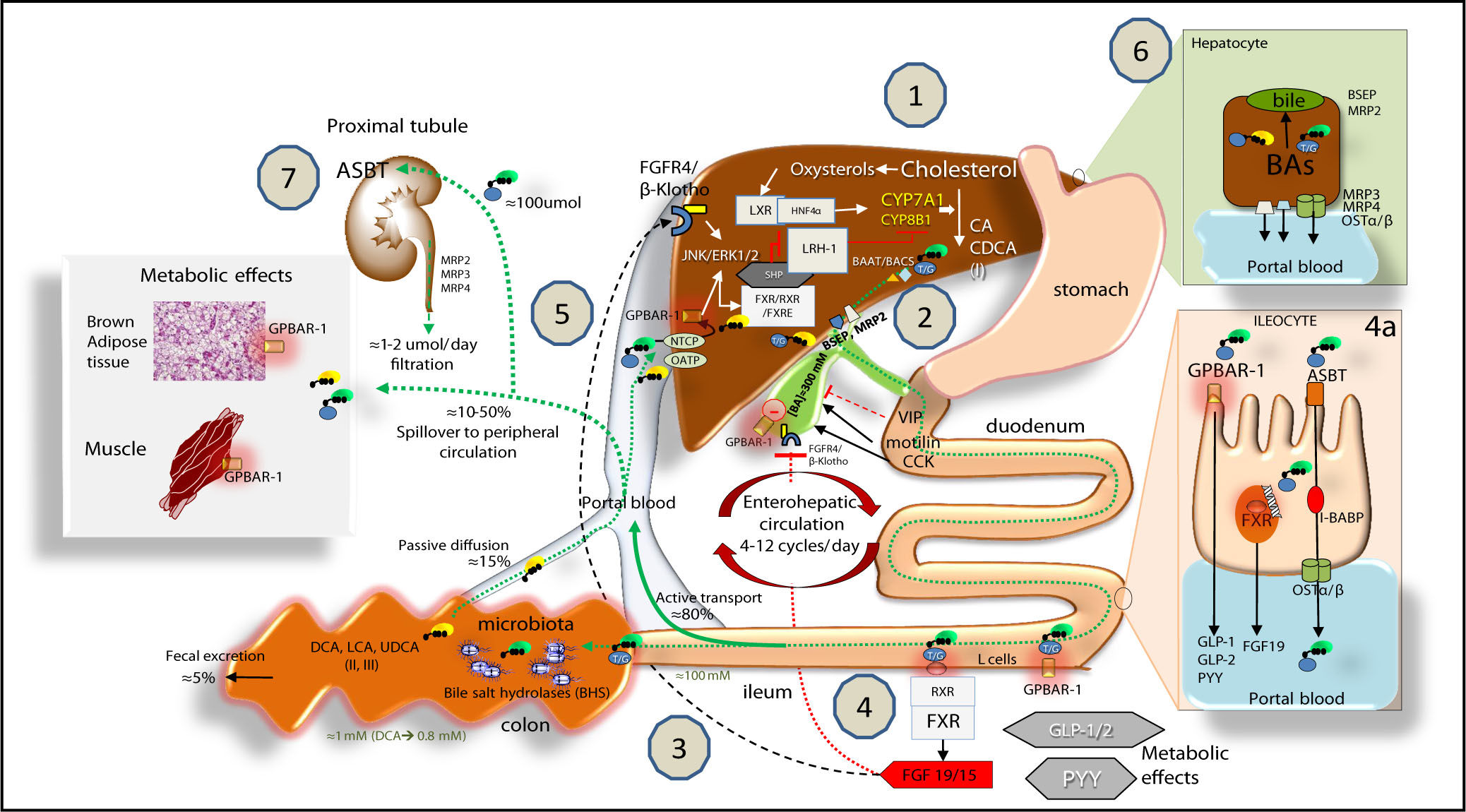MRM-Based Targeted Metabolomics: Absolute Quantitative Analysis of Bile Acids
-
Serum/Plasma: Minimum volume of 100 μL.
- Liver Tissue: At least 50 mg of tissue.
- Other Biological Samples: The type and amount can be adjusted based on the experimental design.
Bile acids (BAs) are critical endogenous compounds derived from cholesterol metabolism, playing a central role in lipid digestion and nutrient absorption. In humans, about 0.4-0.6g of bile acids is present in the liver and bile ducts, making up a significant part of the bile. These compounds are critical for maintaining cholesterol homeostasis and regulating lipid metabolism. Moreover, bile acids act as signaling molecules that interact with receptors such as FXR and TGR5, influencing energy metabolism, immune function, and gut microbiota composition.
Given the biological and clinical importance of bile acids, accurate and comprehensive quantification is crucial for understanding their physiological and pathological roles. MtoZ Biolabs provides a highly sensitive and precise service for the absolute quantitative analysis of bile acids based on Multiple Reaction Monitoring (MRM) technology coupled with liquid chromatography-mass spectrometry (LC-MS).

Di Ciaula A. et al. Ann Hepatol. 2017.
MRM Principle in Targeted Metabolomics
The MRM (Multiple Reaction Monitoring) approach, also known as SRM (Selected Reaction Monitoring), is a targeted method that ensures high sensitivity and specificity for analyzing low-abundance metabolites in complex biological samples. By setting predefined precursor and product ion pairs, MRM can monitor specific bile acids with unparalleled accuracy. This method dramatically reduces background noise and enhances signal-to-noise ratios, making it ideal for the absolute quantification of bile acids in various sample types, such as serum, plasma, and tissue extracts.
MRM's ability to isolate specific transitions corresponding to targeted bile acids is a vital advantage for obtaining high-throughput quantitative data. It is particularly effective in identifying both primary bile acids, such as chenodeoxycholic acid (CDCA) and cholic acid (CA), and their downstream conjugated forms, allowing for a comprehensive assessment of bile acid profiles.

Experimental Workflow
The MRM-based bile acid quantification service involves the following key steps:
1. Sample Preparation
Biological samples, such as plasma or liver tissue, are processed through efficient extraction techniques to enrich bile acids.
2. LC-MS Analysis
Using advanced liquid chromatography coupled with a triple quadrupole mass spectrometer (QQQ LC-MS), the sample undergoes separation followed by MRM-based detection. The Q1 quadrupole isolates the bile acid precursor ions, which are then fragmented in Q2. The product ions are monitored in Q3 to quantify each bile acid.
3. Data Acquisition and Processing
The acquired MRM data are processed using specialized software, allowing for the absolute quantification of bile acids. Calibration curves with known standards are applied to ensure accuracy and reliability in quantification.

Why Choose MtoZ Biolabs?
✔️ High Sensitivity and Specificity: The MRM method allows for the precise detection and quantification of bile acids in low concentrations, even in complex biological matrices.
✔️ Comprehensive Bile Acid Coverage: MRM can simultaneously quantify both primary and secondary bile acids, along with their conjugates, offering a complete view of bile acid metabolism.
✔️Accuracy and Reproducibility: Through internal standards and quality control measures, MtoZ Biolabs ensures high reproducibility across different sample types and batches.
✔️Customization for Specific Needs: The method can be tailored to target specific bile acids of interest, providing flexibility in research or clinical studies.
Sample Submission Requirements
Applications of Bile Acid Quantification
✔️Liver Disease Research: Quantifying bile acids can provide insights into liver dysfunctions, such as cholestasis and non-alcoholic fatty liver disease (NAFLD).
✔️Metabolic Disorders: Bile acid profiles are linked to metabolic syndromes, including obesity, diabetes, and cardiovascular diseases.
✔️Gut Microbiota Interactions: As bile acids are modified by gut bacteria, understanding their profiles can help elucidate host-microbiota interactions.
✔️Pharmacokinetics and Drug Metabolism: Bile acid metabolism is a key factor in drug disposition and efficacy, making MRM quantification useful in drug development.
By utilizing state-of-the-art MRM-based technology, MtoZ Biolabs delivers precise, reliable, and high-throughput bile acid quantification services, empowering researchers with critical insights into bile acid biology and metabolism. This service is an indispensable tool for advancing liver disease research, metabolic studies, and drug development. Contact us for a tailored solution to meet your bile acid quantification needs.
How to order?







